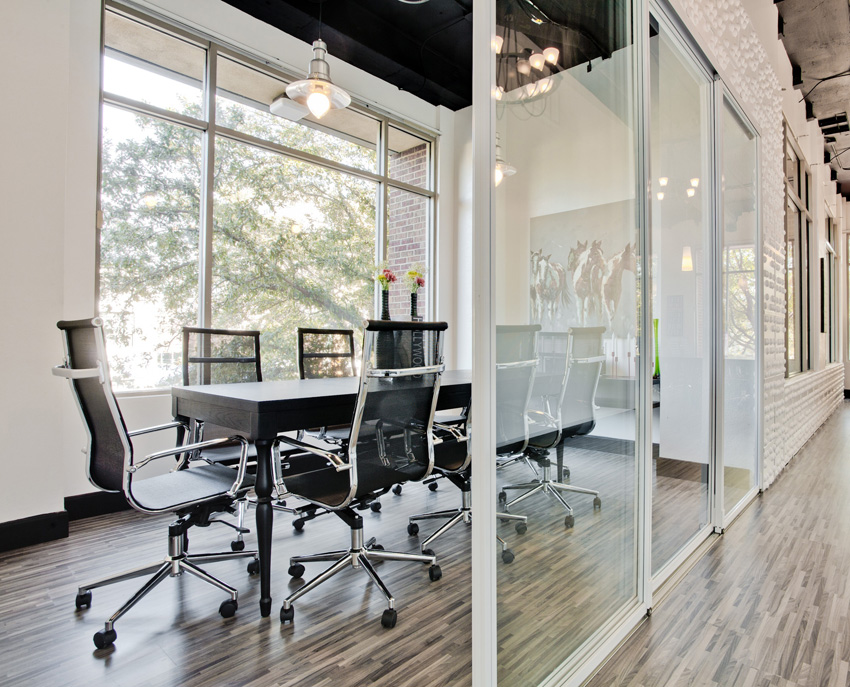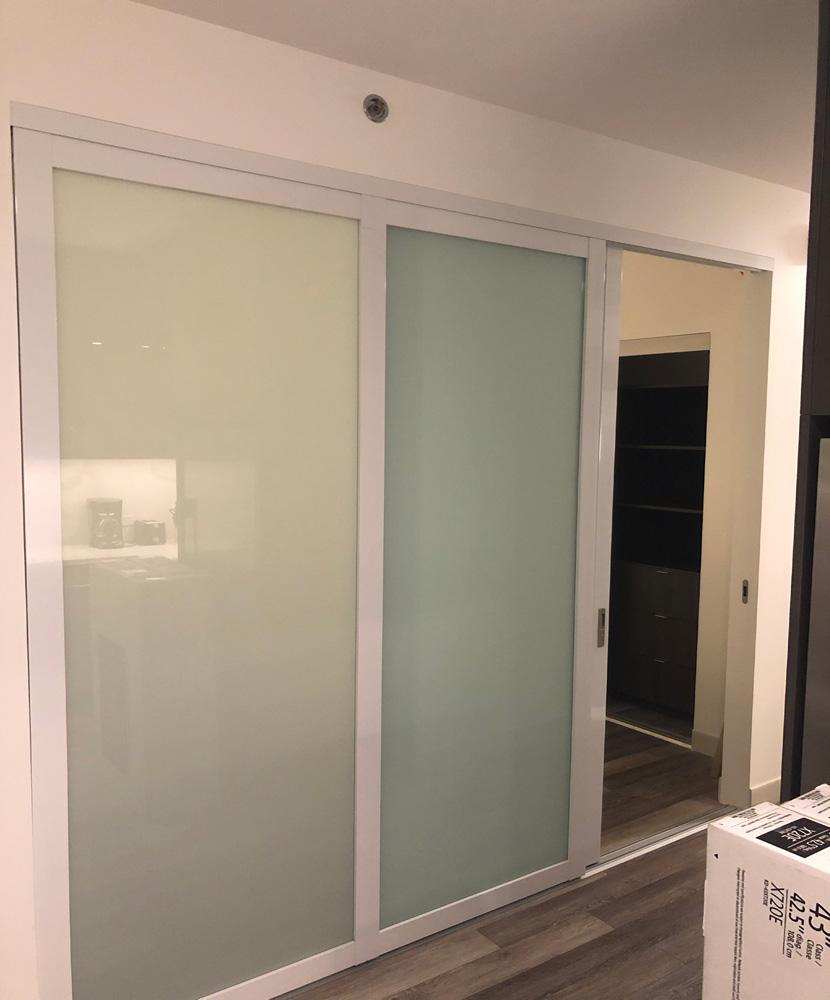Maximizing Value with Interior Glass Door Solutions
Single-Source Suppliers
When architects and interior designers decide to include glass partition systems in their designs, the market offers quite a number of product options. That said, a strong case can be made for choosing a single-source, turnkey supplier to deliver the full system.
For example, some manufacturers measure, build, and install the full system, thereby taking the burden off the architect/designer, contractor, and client, relates Leventhal. Less can go wrong, and there is one place to go if something needs to be adjusted or fixed.
“Working with one supplier minimizes the risk,” agrees James. “They oversee verifying all dimensions, checking for allowances in floor levels, and coordinating installation with the contractor, who is equally as important in understanding the process.”
Bennett adds that single-source suppliers ensure accountability for quality and functionality, leverage their knowledge of the full system to ensure that complex systems work together, and streamline commissioning and user training.
“Single-source vendors truly know their product backward and forward, and there is a level of clarity when dealing with them,” says Kelly Capp, a senior designer with The Switzer Group. “Providing the general contractor with a design element that does not require reconfiguration or additional detailing minimizes the possibility of errors.”
In minimizing the number of sources, this is also a great way to ensure compatibility of parts and interoperability, cut down on lead times, and increase the installation efficiency.
“Good specifiers can offer frames, glass, and hardware, allowing design teams to select the exact profiles they want, and ensuring the system is visually integrated with a project’s overall design concept,” explains Rodriguez. “The convenience factor is significant and highly valuable.”
The Bottom Line
Ultimately, the flexibility to manipulate and change spaces within the workplace is a great benefit to companies and employees. Filling this need, glass walls, demountable partitions, and prefabricated meeting rooms and conference spaces can be integrated into an office plan in cost-effective ways that create open, light-filled spaces.
“Reconfigurable glass walls are a great option for clients who are leasing their space in terms of flexibility, growth, and relocation,” Capp says. The same applies to space-saving barn doors, pocket doors, bifold solutions, and stacking sliders.
Offering some final food for thought, MacEwen challenges companies and designers to reevaluate how the boundaries within the floor plate are defined. Is a conference room simply a place to meet clients, or are there ways to enable it to give back to the surrounding space?

This nearly silent sliding glass door design functions as a transparent, daylit conference room and can be opened up to contribute to the larger open floor plan.
“I think the modern office needs to demand more than a single programmatic function. How can or does the idea of a conference room transcend its function and participate in the needs of the office, even if those needs are just daylight and views?” he concludes.
Work Modalities
To help companies determine what types of spaces will optimally support its employees, DLR Group has developed six Work Modalities: Hard Focus, Soft Focus, Collaborate, Socialize, Learn, and Rejuvenate. Based on extensive research, the architects are using these modalities to help design a mix of appropriate workspaces for their clients.
“Designers have the opportunity to create healthy work environments where people can do their best work—through choice-based workplaces that are backed by research and tailored to the culture and people these spaces support,” writes Michael Vander Ploeg, a senior associate with DLR Group, in Work Design Magazine.
For example, creating reports or white papers falls under Hard Focus and required spaces that are visually simple and acoustically private with soft but clear lighting.
He concludes, “These design choices limit the decisions people must make to work in that setting, eliminating distractions and allowing them to direct their attention to the detailed tasks.”










